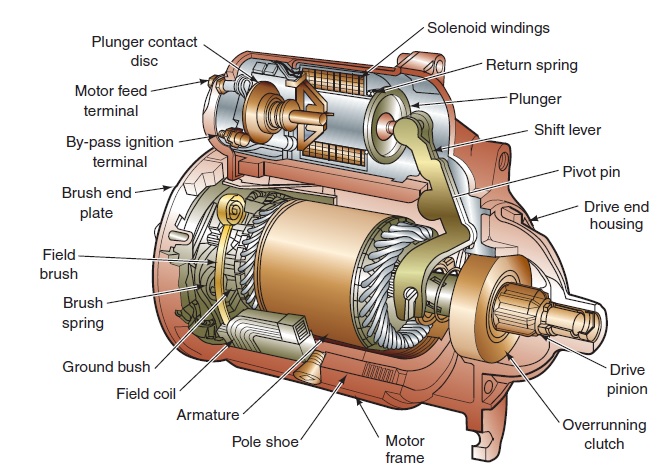Motor controls can ideally be identified as a group of devices that govern the performance of an electric motor in a predefined manner. Motor controls are also known as motor controllers. They have several essential functions which include: automatically or manually starting as well as stopping the operation of an electric motor, setting forward or reversing the course of rotation, selecting and regulating the speed of rotation, controlling or regulating the torque, as well as protecting the motor against several degrees of electrical overloads and faults.
Motor Control Applications

Image Source: autosystempro.com
Electric motors, regardless of their type, have a controller of some type. These motor controllers might differ in terms of their features and complexity, which is mainly determined by the function of a specific motor. The simplest example of a motor control mechanism is a regular switch that connects a motor to its power source. This switch can be a manual controller, or a relay connected to an automatic sensor for starting and stopping a motor.
Depending on the applications of a motor, controllers may offer different features. They help the motor start in low-voltage conditions, allow multiple-speed or reverse control operations, protect from over current and overload faults, and perform a wide range of other functions. Some complex motor control devices also help in effectively controlling the speed as well as torque of the motor(s) and might also be a part of a closed loop control system responsible for the exact positioning of the motor driven machine.
Different Types of Motor Controller
Motor control devices are designed to be controlled in a manual, automatic, or remote manner. They can be used for starting or stopping a motor attached to a machine as well as serve several other purposes. These controls are categorized according to the type of motor they are designed to operate.
- Motor Starters
Small motors can be started by simply plugging the electric switch into the receptacle and switching the power button on. However, larger motors need motor starters, or contractors, which are specialized switching units used to power an electric motor. On being powered, the direct on-line starters connect motor terminals to the power supply immediately. A reverse starter, which contains two direct on-line circuits, can also be used for rotating the motor in either direction. Very large motors that operate on medium voltage power supplies use power-circuit breakers as starter elements.
- Reduced Voltage Starters
Two or more starters are used for starting a motor in reduced voltage conditions. Through a series of inductance or an autotransformer, lower voltage is presented at the motor terminals, which, in turn, helps in reducing the starting torque and the inrush electric current. Once the motor reaches a certain fraction of its top-load speed, the starter automatically transfers full voltage current to the motor terminals.
- Adjustable-Speed Drives
Also known as variable-speed drive, the adjustable speed drive is a unified combination of devices that enable operators to drive as well as adjust the operating speed of a mechanical load. Such drives comprise of a speed controller, or power convertor, a range of auxiliary equipment and devices, and an electric motor.
- Intelligent Controllers
Intelligent motor control devices use advanced microprocessors for controlling the power of electronic devices employed in an electric motor. These controllers monitor the load exerted on a motor and match torque to the recorded load accordingly. This is done by cutting down the voltage to AC terminals and lowering the current and Kvar at the same time, which results in energy efficiency, and lesser noise, vibrations as well as heat generated by a motor.
- Servo Controllers
Servo controllers can be understood as a wide category of motor control devices, primarily known for their highlighting features like:
- Precise closed-loop positional control.
- Fast rate acceleration.
- Precise speed control servo motors made from different types of motors, including AC servo motors, brushed DC motors and brushless DC motors.
These controls use position feedback for closing the control loop and are commonly used in combination with resolvers, encoders, and Hall Effect sensors for directly measuring the position of rotors.